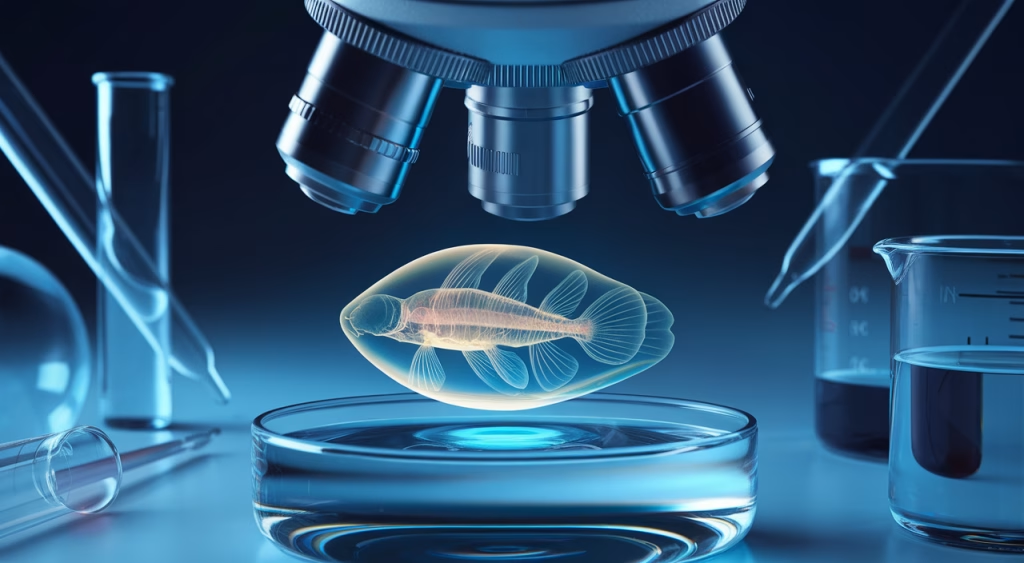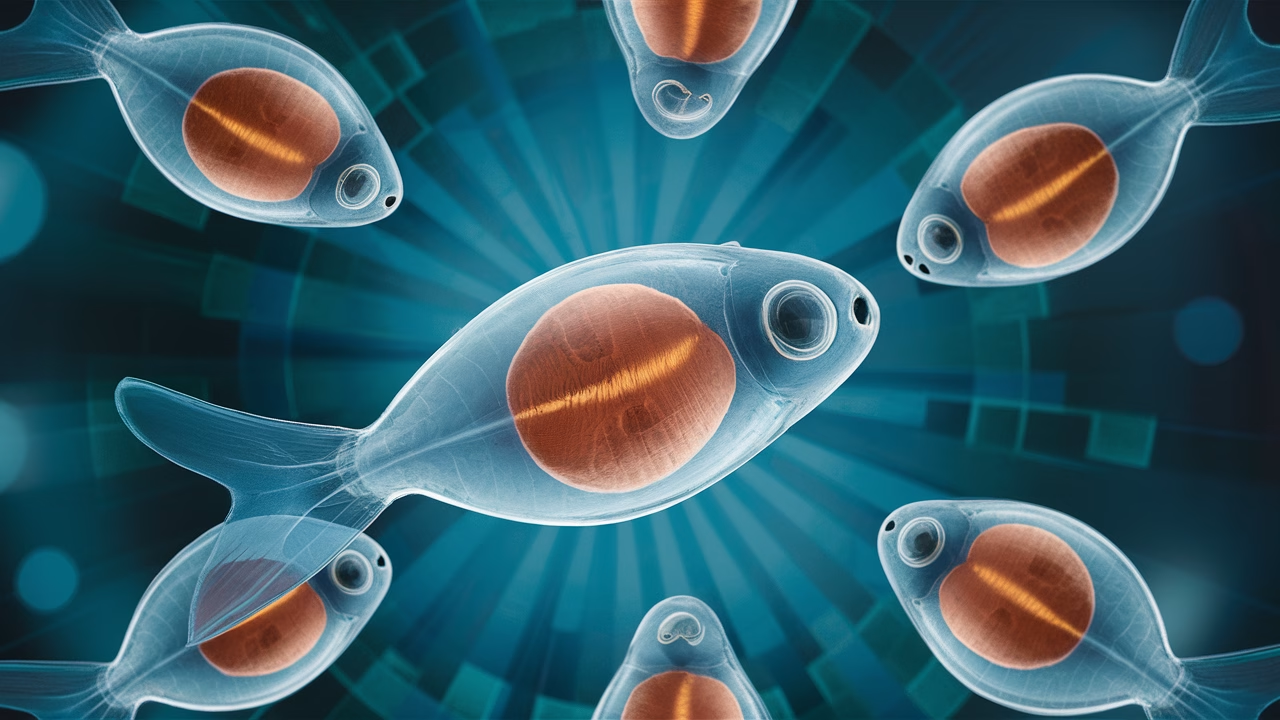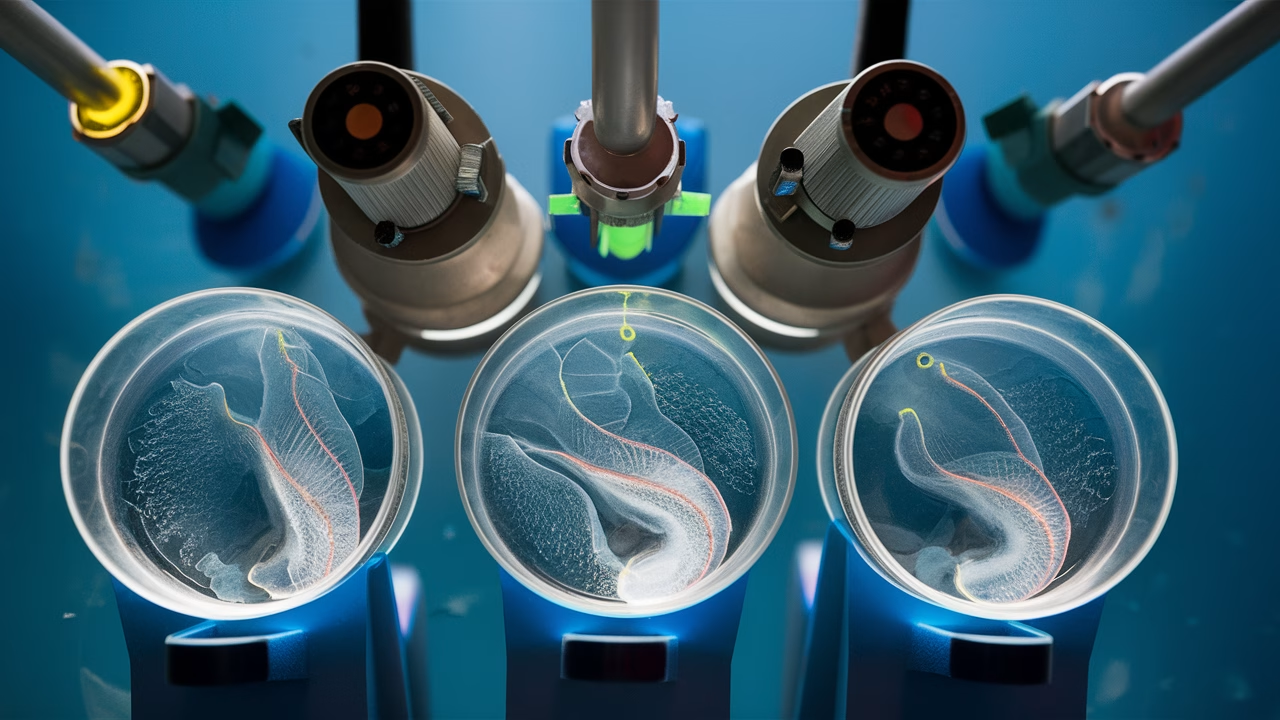Why are transparent zebrafish embryos so valuable in research?
Transparent zebrafish embryos provide an unparalleled view into the earliest stages of vertebrate development. Their optical clarity allows researchers to observe dynamic biological processes in real-time, making them one of the most powerful biomedical model organisms in contemporary scientific research.
TL;DR: Advantages of Transparent Zebrafish Embryos in Research
- Live Imaging Excellence: Transparency allows researchers to track cell movement and organ development without intervention.
- Rapid Development: Zebrafish embryos develop major organs within 24 hours after fertilization, speeding up experimental cycles.
- High Genetic Similarity: Zebrafish share over 70% of their genes with humans, making them ideal for modeling human disease.
- Versatile Applications: From cardiovascular science to neurobiology, zebrafish are vital in many biomedical fields.
- Cost-Effective Model: Maintaining zebrafish colonies costs far less than mammalian models like mice.
Importance of Zebrafish in Scientific Research
Ever wondered what it’s like to observe life form before it even has a heartbeat? With zebrafish transparent embryos, you can. As researchers, we often seek tools that bring us closer to the unseen — and zebrafish offer just that. Their shell-like transparency isn’t just fascinating; it’s transformative for biomedical model development.
Zebrafish (Danio rerio) have become an indispensable species in life science research. Their ability to produce hundreds of transparent embryos weekly, coupled with short generational cycles, makes them ideal for high-throughput analysis. These fish aren’t new to the world of scientific models — they’ve been used since the 1970s — but their significance has grown exponentially with modern imaging and gene-editing tools.
Most importantly, zebrafish provide a vertebrate biomedical model that fills the gap between invertebrates like Drosophila and more complex mammals. Researchers can explore vertebrate development in a cost-effective yet biochemically relevant system. This helps bridge the translational divide — offering insights that are directly applicable to human biology through transparent zebrafish research.
The Unique Advantage of Transparent Zebrafish Embryos
The transparency of zebrafish embryos is more than a visual perk — it’s a research revolution. Let’s break it down. A zebrafish embryo develops externally and remains optically clear for several days. This optical clarity permits researchers to use fluorescence microscopy and other light-based imaging techniques without needing to slice or stain tissues in their biomedical model studies.
| Feature | Benefit for Research |
|---|---|
| Transparent body | Non-invasive real-time observation |
| External fertilization | Easy access to developing embryos |
| Rapid organ formation | Accelerated experiment timelines |
| Genetic manipulation | Precise gene editing and disease modeling |
Think of zebrafish embryos like high-definition biological canvases. You can inject fluorescent markers into developing transparent embryos to trace neurons as they grow or monitor heart function beat by beat. In practice, this means no second-guessing: we see what’s happening in our zebrafish biomedical model, live and in color.
Applications of Zebrafish in Biomedical Research
Thanks to their compact size and high genetic fidelity, transparent zebrafish embryos are like biological Swiss Army knives — useful in an astonishing range of applications. Here’s how researchers leverage them across biomedical domains:
- Cardiology: Understanding heart development, congenital defects, and blood flow dynamics in transparent zebrafish.
- Neurobiology: Tracing neural pathways via calcium imaging in real-time using zebrafish embryos.
- Oncology: Modeling tumor growth and metastasis in transparent embryos with implanted cancer cells.
- Toxicology: High-throughput testing of pharmaceutical toxicity during embryogenesis in zebrafish models.
- Genetics: Using CRISPR-Cas9 to introduce human-equivalent gene mutations for disease studies in transparent zebrafish.
Yet the most exciting part may be drug discovery using zebrafish biomedical models. Zebrafish embryos are ideal for in vivo screening. We can test thousands of compounds for efficacy and side effects while actually seeing how organs respond in real time through their transparent bodies. For example, a simple tweak in a chemical’s structure might alter how a fluorescent-tagged heart beats — and tell us volumes about its therapeutic potential in our biomedical model system.
Breakthrough Innovations Enabled by Zebrafish Studies
The transparent zebrafish embryo hasn’t just improved research — it’s fueled genuine innovation in biomedical science. Let’s look at some of the landmark breakthroughs catalyzed by these transparent embryos:
- The identification of key genes regulating vertebrate organogenesis through zebrafish research.
- The first real-time tracking of cancer cell dissemination in a live transparent zebrafish host.
- High-resolution visualization of immune system development in zebrafish embryos.
- Development of blood-brain barrier models for pharmaceutical studies using transparent zebrafish.
One study used transparent zebrafish to mimic human neurological disorders like epilepsy. Researchers used optogenetics — light-sensitive gene techniques — in transparent zebrafish embryos to detect abnormal neuron firing. This helped screen multiple anti-seizure drugs and led to a promising new molecule now entering pre-clinical trials through this biomedical model approach.
Here’s what often happens in practice: a researcher injects a single-cell zebrafish embryo with a CRISPR-edited gene. Hours later, they photograph the effects as the transparent embryo develops. That’s fast, efficient progress rarely possible in other vertebrate biomedical models.
Future Prospects and Research Impact
The journey of zebrafish research is just beginning. As technologies expand — from AI-enhanced image analysis to single-cell transcriptomics — transparent embryos will continue to unlock new biological insights in biomedical model systems.
We’re now seeing zebrafish models for complex human diseases like Alzheimer’s, kidney failure, and even melanoma. The transparency of zebrafish embryos offers spatial and temporal precision that enhances our ability to manipulate and monitor these biomedical models. In the future, expect transparent zebrafish to play a pivotal role in personalized medicine — tailoring drugs based on a patient’s genetic profile modeled in fish embryos.
Conclusion: Harnessing the Potential of Zebrafish for Scientific Discovery
The zebrafish transparent embryo has reshaped how we study vertebrate development, disease, and treatment through advanced biomedical models. Its clarity gives us metaphorical — and literal — vision into biology. Transparent zebrafish are not just the future; they are the now of scientific exploration. They combine accessibility, versatility, and relevance like few other biomedical model organisms can.
If you’re engaging in biomedical research and haven’t yet considered zebrafish transparent embryos — it’s time. After all, in science, seeing isn’t just believing. It’s understanding through the power of transparent zebrafish research.
Frequently Asked Questions
- What makes zebrafish embryos transparent?
- Their cells lack pigmentation in early stages, allowing light to pass through tissues without distortion.
- Why are zebrafish better than mice for some studies?
- Zebrafish offer faster development, easier genetic manipulation, and real-time imaging advantages not found in mice.
- Can zebrafish really model human disease?
- Yes. They share a significant portion of human genes and can replicate conditions like cancer, cardiac defects, and neurodegeneration.
- Are zebrafish embryos used in drug testing?
- Absolutely. Their transparency and rapid development make them ideal for high-throughput drug screening and toxicity assessment.
- How are genes edited in zebrafish?
- Researchers use CRISPR-Cas9 and other modern tools to precisely target and modify zebrafish genes at early embryo stages.
- Is it ethical to use zebrafish in experiments?
- Yes, zebrafish are considered a humane alternative to mammals in many cases, and most institutions follow strict ethical guidelines.
- What is the lifespan of a zebrafish?
- The average lifespan is 2–3 years, but their early developmental stages happen within days, making them ideal for quick studies.




